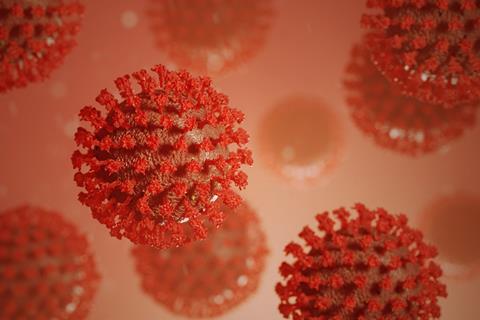Two Melbourne-made COVID-19 vaccines have shown strong potential to be an improved approach for boosting immunity to SARS-CoV-2 variants according to interim results of a Phase 1 clinical trial.

Published in The Lancet’s eBioMedicine, the trial saw 76 healthy adults from Melbourne, aged 18 to 64 who were previously vaccinated with licensed SARS-CoV-2 vaccines, randomised to receive a fourth dose of a novel protein vaccine, mRNA vaccine or placebo.
Both vaccines demonstrated strong boosting capabilities in a highly immune population and a remarkable breadth of immune response, including against omicron sub-variants. In addition, no safety signals were observed with either candidate.
Tip of the spike protein
The two vaccine candidates, created by researchers at the Peter Doherty Institute for Infection and Immunity (Doherty Institute) and the Monash Institute of Pharmaceutical Sciences (MIPS), are distinct from most existing vaccines that are in use around the globe because they focus the immune response on the tip of the SARS-CoV-2 spike protein, called the receptor binding domain (RBD). The RBD enables the virus to enter and infect cells in the body and elicits over 90 per cent of neutralising antibodies (antibodies that can block the virus) following SARS-CoV-2 infection.
The two candidates are:
- RBD protein vaccine – uses an engineered part of the virus protein, rather than genetic material or another virus, to elicit an immune response.
- RBD mRNA vaccine – represents the virus genetic sequence of mRNA that codes for the tip of the spike, which leads to production of the RBD protein in the recipient.
University of Melbourne Professor Terry Nolan, Head of the Vaccine and Immunisation Research Group at the Doherty Institute, which led the Phase 1 first-in-human trial, said the team was exceptionally pleased by the results.
More efficient
“Post-market studies of omicron-directed, whole spike bivalent mRNA booster vaccines have shown modest increases in immune responses to omicron variants compared to ancestral vaccine boosts,” said Professor Nolan.
“Because our two vaccines focus the immune response on the receptor binding domain, they avoid unhelpful immune responses against other parts of the spike protein and could therefore provide a more efficient approach for boosting immunity to the virus, presenting a strong case to proceed to Phase 2 clinical trials.”
Professor Colin Pouton of MIPS, who led the development of the RBD mRNA vaccine, said the mRNA vaccine showed a strong immune response, even at the lowest dose tested.
“So far, both preclinical and clinical studies have shown our RBD mRNA vaccine to provide a strong boost at low doses, suggesting the very real potential to develop a multivalent vaccine, on an annual basis and to protect against emerging new variants of COVID-19, which are believed to be the root cause behind the ongoing ‘waves’ we are still experiencing,” said Professor Pouton.
Immune imprinting
“New strategies are still needed to improve efficacy of COVID-19 variant vaccines and to reduce death rates, particularly among older and vulnerable patients. In the case of our mRNA vaccine, we’ve also seen early potential to address the issue of immune imprinting, which will also need to be a critical feature for a next-generation vaccine.”
The team is now exploring options for progressing these vaccines to Phase 2 trials, which will require additional funding and industry support.
The Doherty Institute and MIPS would like to thank their funders and other supporting organisations including the University of Melbourne, The Royal Melbourne Hospital, CSIRO, Seqirus and IDT Australia.







No comments yet